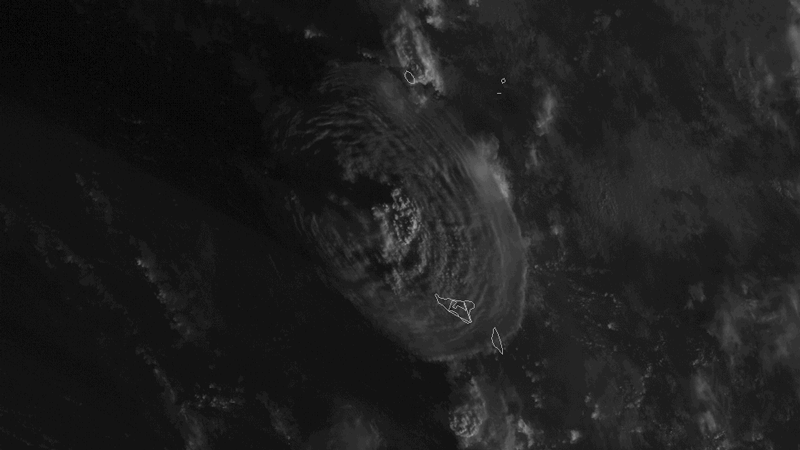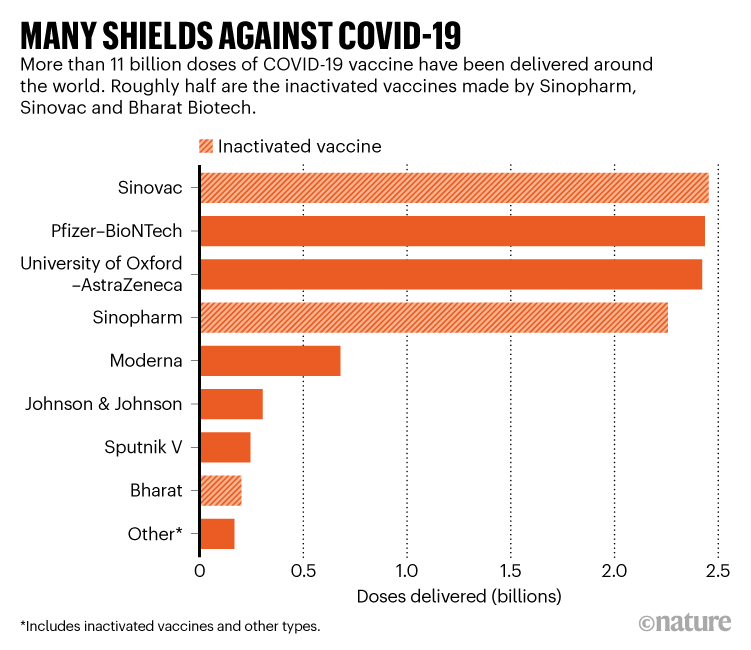Hello Nature readers, would you like to get this Briefing in your inbox free every day? Sign up here.

The US National Oceanic and Atmospheric Administration’s GOES-West satellite captured the explosive eruption of Hunga Tonga–Hunga Haʻapai.Credit: NOAA
Tonga volcano caused mysterious air waves
Satellite data show that the eruption of Hunga Tonga–Hunga Haʻapai created a pattern of atmospheric gravity waves unlike anything seen before. The discovery was made in images collected by the Atmospheric Infrared Sounder (AIRS), mounted on NASA’s Aqua satellite, in the hours after the Tongan volcano erupted on 14 January. They show dozens of concentric circles, each representing a fast-moving wave in the gases of the atmosphere, stretching for more than 16,000 kilometres. Researchers think the waves had probably passed around the globe several times.
An MRI scanner for the people
A prototype magnetic resonance imaging (MRI) scanner does not require heavy shielding and is much quieter than the usual giant white donut-shaped scanner. Costing an estimated US$20,000 to build, it would be much cheaper than an off-the-shelf MRI machine, priced at $1 million to $2 million. The scanner uses a permanent samarium-cobalt magnet to generate a magnetic field with much lower strength than that produced by a typical MRI machine and can be plugged into a normal wall outlet. Researchers hope that their prototype might one day bring this valuable clinical tool to the 70% of the world’s population that has limited access to it now. To that end, they have made the design and the software code needed to operate it freely available on GitHub.
Reference: Nature Communications paper
‘Nocebo’ underlies vaccine side effects
Most of the side effects that people experience after a COVID-19 vaccination can be blamed on the ‘nocebo’ effect. The nocebo effect is like the evil twin of the placebo effect — for example, it heightens pain if a person anticipates that something will hurt. Researchers reviewed 12 randomized clinical trials of COVID-19 vaccines and found that the nocebo effect accounted for 76% of common adverse reactions, such as headache and fatigue, after the first dose. The researchers argue that telling people about the effect might reduce the worries that make some hesitant to get vaccinated. “Most researchers argue that patients should be told less about side effects to reduce their anxiety,” says placebo researcher and senior author Ted Kaptchuk. “I think this is wrong. Honesty is the way to go.”
Read more: What the placebo (and nocebo) effect looks like in the brain (Nature Research Highlight | 2 min read, Nature paywall, from October)
Reference: JAMA Network Open paper
Features & opinion
The National Cancer Act at 50
The US National Cancer Act of 1971 has fostered tremendous progress in our understanding of the biology that underlies cancer. Such progress has saved lives. However, scientific and social challenges remain, argues a Nature editorial. Today, we know that cancer is not one disease, but many different ones. And many therapies that can beat this complex and challenging illness are too expensive for individuals or health-care systems. The idea of an ‘all-out assault’ on cancer has been moderated, with progress understood to be more likely to occur in small steps.
Step inside a LEGEND
LEGEND-200, an experiment to detect exotic ‘Majorana’ particles, takes centre stage in a series of gleaming images by photographer Enrico Sacchetti. The experiment, based in Gran Sasso in Italy, aims to understand why the Universe has a mysterious imbalance: it seems to contain much more matter than antimatter.
Read more: The vanishing neutrinos that could upend fundamental physics (Nature | 8 min read, from July)
Infographic of the week

Source: Data from Airfinity
Laboratory evidence suggests that inactivated-virus vaccines — which include some of the world’s most widely used COVID-19 vaccines — provide little to no protection against infection with the Omicron variant. But inactivated vaccines might still protect against severe disease and so remain crucial for preventing hospitalizations and deaths. Inactivated vaccines include those made by China’s Sinovac and Sinopharm, India’s Covaxin, Iran’s COVIran Barekat and Kazakhstan’s QazVac. (Nature | 6 min read)
See more of the week’s key infographics, selected by Nature’s news and art teams. (Source: Data from Airfinity)
